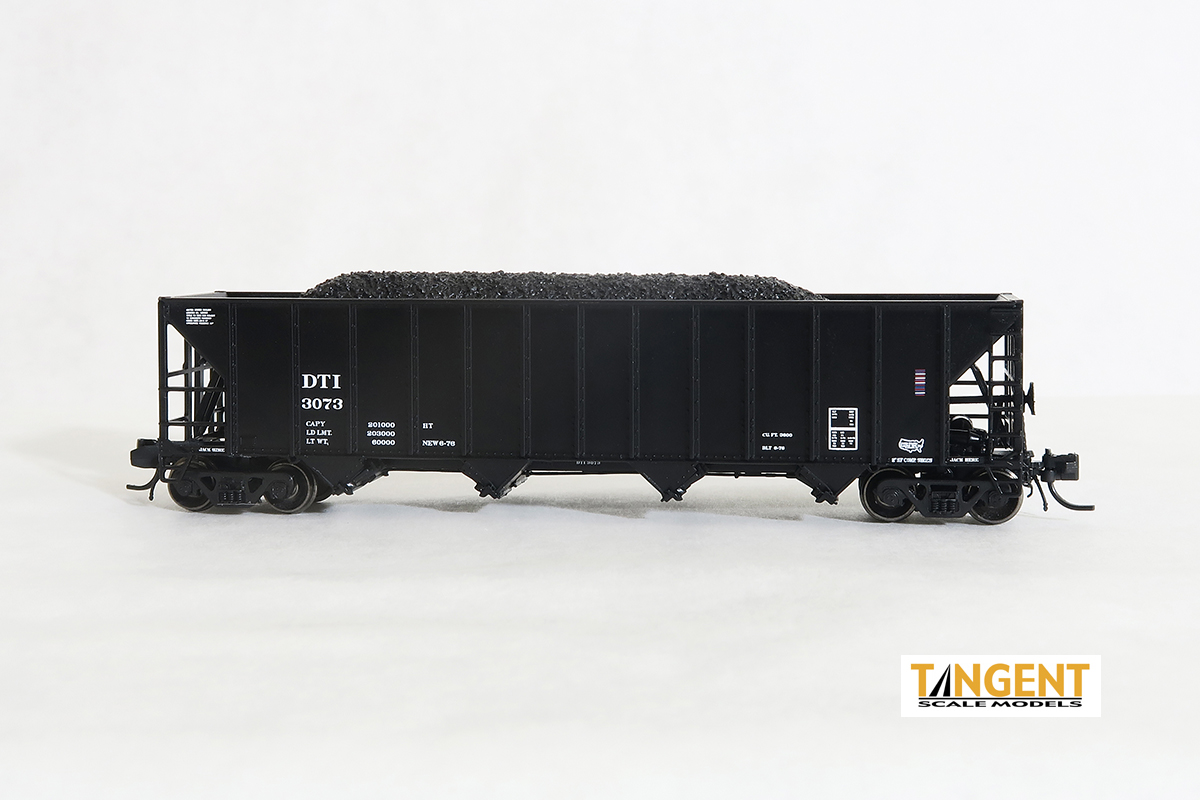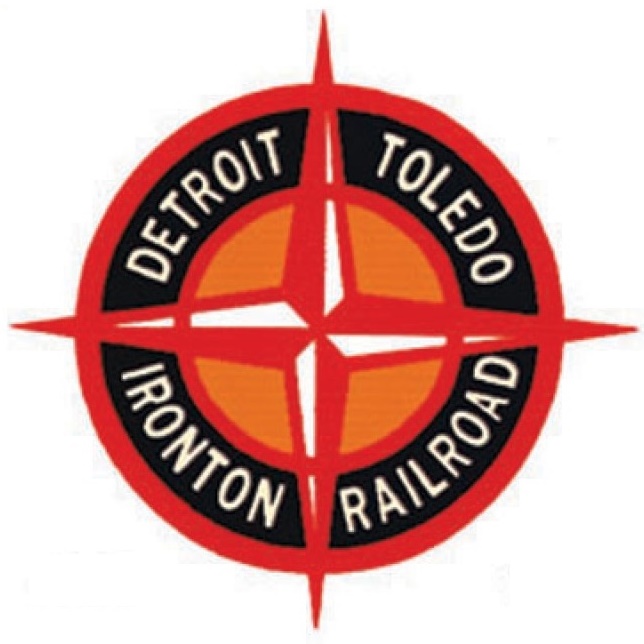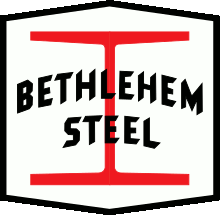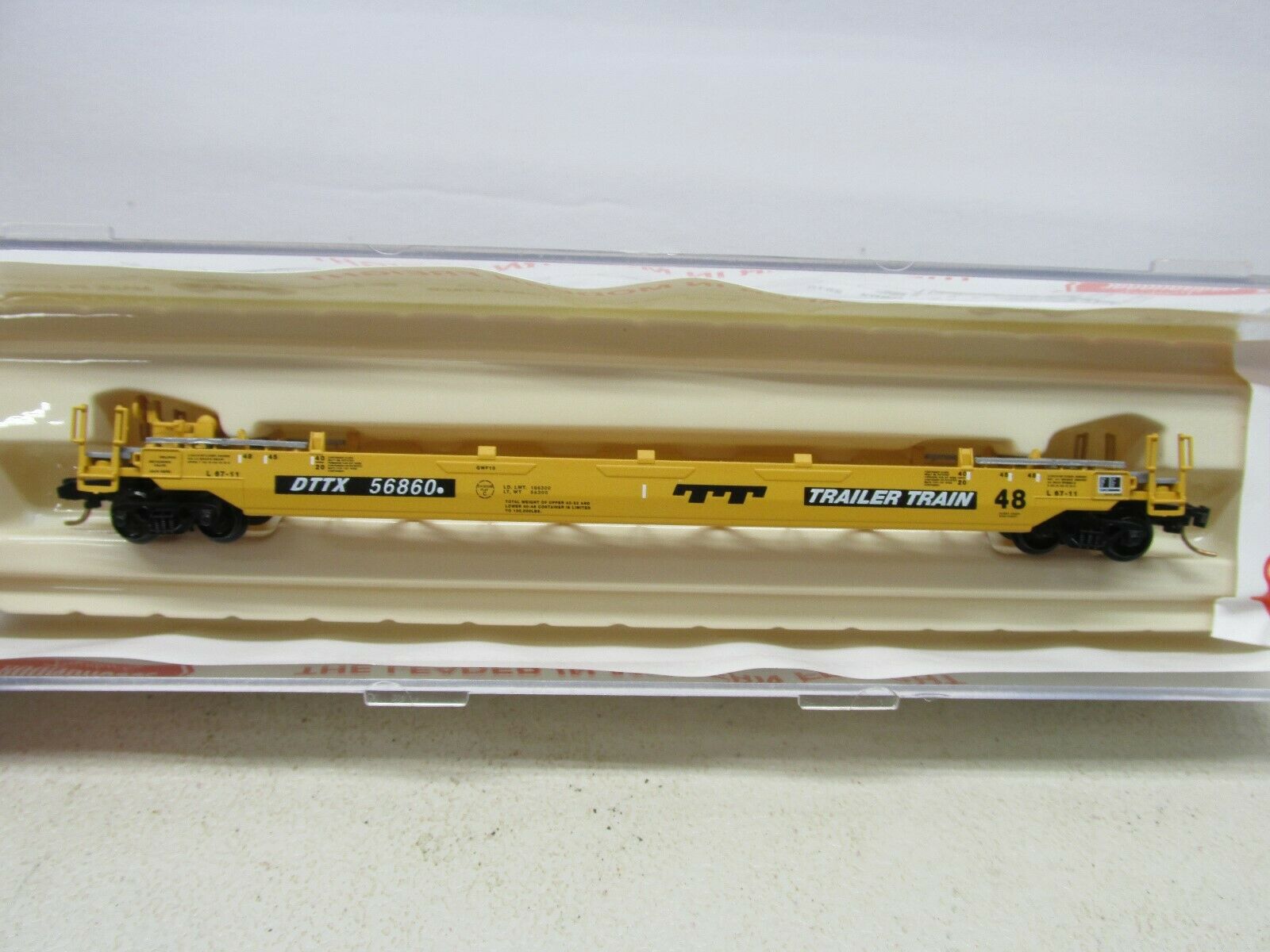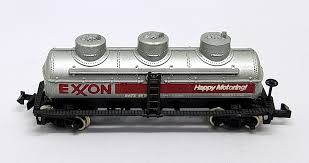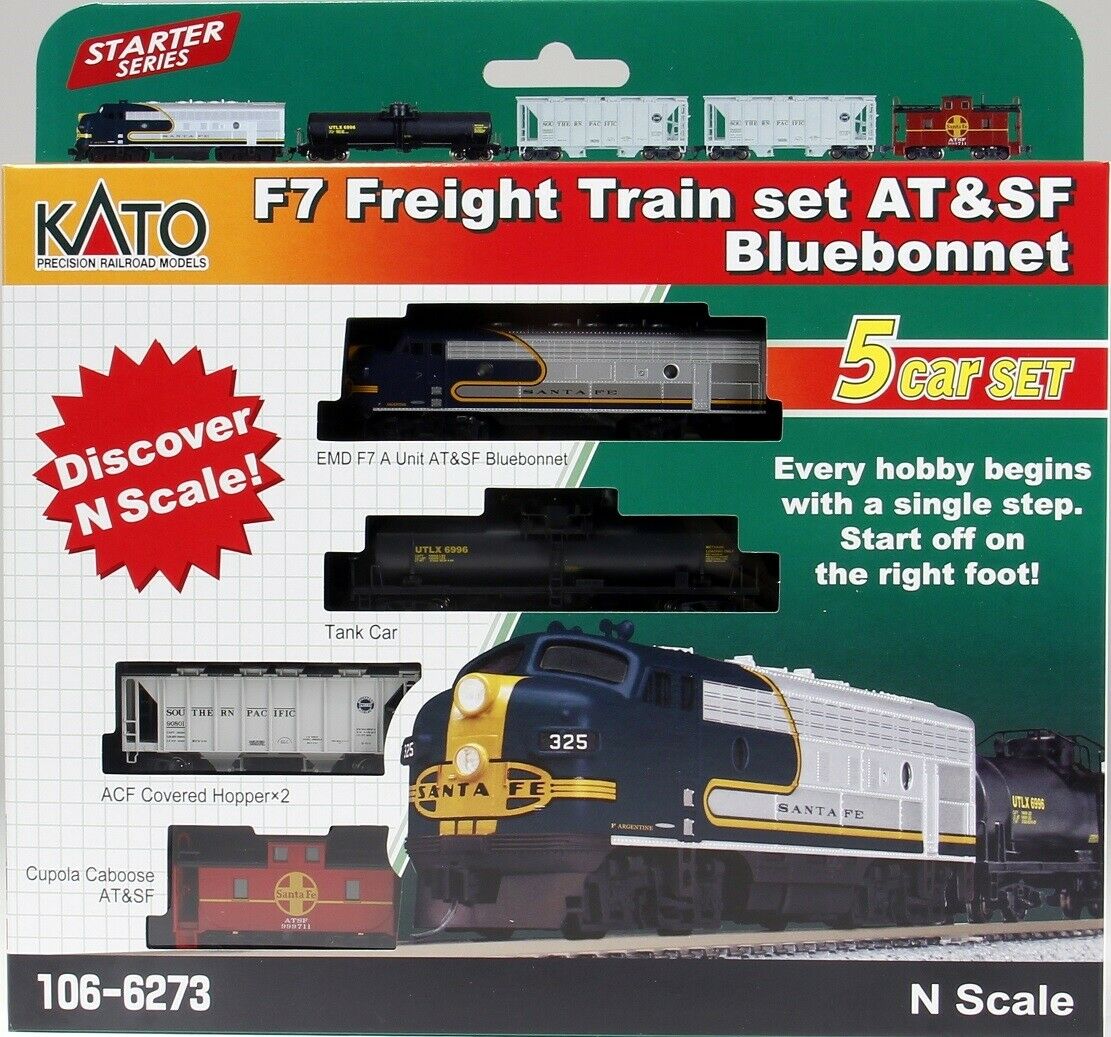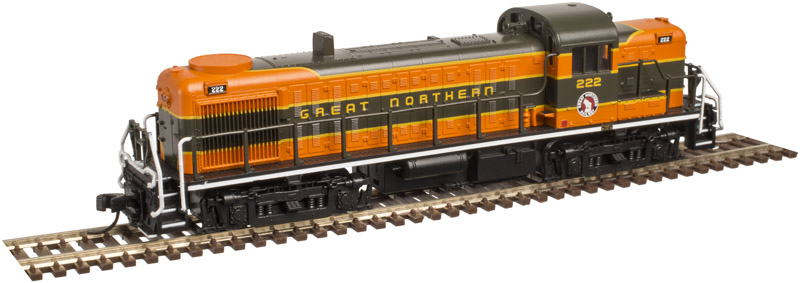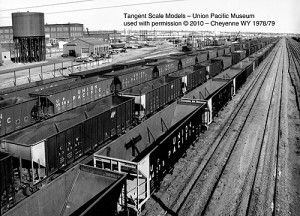Specific Item Information: Product: Bethlehem 3600 cuft Quad Hopper
Scale: N Scale 1:160
Truck: 100-Ton Roller Bearing
Wheels: 36″ CNC free-rolling precision metal wheels with front and back profile
Minimum Suggested Radius: 18.75″
Detroit Toledo & Ironton (DT&I) “Original 1976 Black” is a nod to our DT&I friends
Model Information: Tangent introduced these cars in September of 2018. It was their very first forray into N Scale. These distinctive 100-ton quad hoppers match the Union Pacific specification and were built by Bethlehem Steel in the 1970s. The Tangent UP replicas represent more than 6,400 “quad” hoppers, UP’s largest fleet of coal hoppers in company history.
The Tangent Scale Models prototype replica of the Union Pacific Bethlehem design quad hopper has never been produced in N scale, making it a distinctive addition to any freight car fleet. Our stunning N Scale Quad Hopper model is loaded with detail. We set out to produce an N Scale car that is worthy of the Tangent brand, bringing as much of our industry-leading HO Scale execution and detail as possible packed in an N Scale box.
The Tangent Scale Models prototype replica of the Union Pacific Bethlehem design quad hopper has never been produced in N scale, making it a distinctive addition to any freight car fleet. Our stunning N Scale Quad Hopper model is loaded with detail. We set out to produce an N Scale car that is worthy of the Tangent brand, bringing as much of our industry-leading HO Scale execution and detail as possible packed in an N Scale box.
Prototype History: These cars represent UP’s largest fleet of coal hoppers in company history. First produced in 1974 by Bethlehem Steel as UP class H-100-10, production of a majority of the fleet occurred in UP’s Albina Shops in Portland OR between 1976 and 1981. Production of this important fleet ended with the H-100-23 class, after UP placed more than 6,400 of these “quad” hoppers in service in the rapidly-growing Western low-sulfur coal market. These cars became the workhorses of the UP coal fleet, serving coal originations in Wyoming, Utah, Colorado, and the PowderRiver Basin, and sometimes on non-UP coal originations such as DRGW, Utah, and Wyoming & Colorado (former UP branchline). The DRGW origins became part of Union Pacific in 1996, and to this day these mines continue to load these UP quad hoppers!UP’s quad hoppers wandered both systemwide and to offline railroads as customers sourced coal from a variety of origins.
A sample destination to the west that received coal in these hoppers was Southern California’s Kaiser Steel located in FontanaCA, as well as the bulk export terminal at San Pedro. Trains of quad hoppers for these customers operated over CajonPass with various motive power groupings, most notably mixed DRGW and UP power (plus helpers). A few sample eastern gateways in early years were the Commonwealth Edison Co. power plants at Waukegan IL and Hammond IN, Kansas City Power & Light at Kansas City MO, Illinois Central destinations for TVA in Kentucky, not to mention Eastern and Midwestern carriers both in carload (sourced for cement and other production purposes) and unit train services. These quad hoppers continue to serve, operating to customers without dedicated bank-owned coal sets, as well as services literally anywhere when customers in North America want to increase coal deliveries from UP sources. Finally, the quad hoppers have been spotted in non-coal services such as miscellaneous aggregates, coke, and sugar beet services.On this page we have included an updated gallery of prototype photos to show you some of the major paint schemes in service, a free service from Tangent Scale Models. We believe that an educated customer is a happy customer. All images below can be enlarged.
A sample destination to the west that received coal in these hoppers was Southern California’s Kaiser Steel located in FontanaCA, as well as the bulk export terminal at San Pedro. Trains of quad hoppers for these customers operated over CajonPass with various motive power groupings, most notably mixed DRGW and UP power (plus helpers). A few sample eastern gateways in early years were the Commonwealth Edison Co. power plants at Waukegan IL and Hammond IN, Kansas City Power & Light at Kansas City MO, Illinois Central destinations for TVA in Kentucky, not to mention Eastern and Midwestern carriers both in carload (sourced for cement and other production purposes) and unit train services. These quad hoppers continue to serve, operating to customers without dedicated bank-owned coal sets, as well as services literally anywhere when customers in North America want to increase coal deliveries from UP sources. Finally, the quad hoppers have been spotted in non-coal services such as miscellaneous aggregates, coke, and sugar beet services.On this page we have included an updated gallery of prototype photos to show you some of the major paint schemes in service, a free service from Tangent Scale Models. We believe that an educated customer is a happy customer. All images below can be enlarged.
Road Name History: The DT&I was born in 1905 with the sale and reorganization of the Detroit Southern Railroad. Beginning in Detroit, the DT&I carved a huge northwest to southeast arc around western Ohio, serving Lima (like the bean, not Peru), Springfield, Jackson, and finally the Ohio River port of Ironton on the Kentucky border. Toledo was reached via a short segment of trackage rights on the Ann Arbor.
In 1920, as part of a complicated solution to realigning a shipping channel that served Henry Ford’s River Rouge plant, Ford bought the DT&I. The Ford years brought a ban on facial hair, uniform white hats and an expectation that crews keep their overalls clean and tidy. He also strung catenary and bought heavy electric locomotives for a 17 mile line segment between his River Rouge plant and Carolton, Michigan. During this period, the DT&I closed for business on Sundays. In 1929, Ford sold the line to Pennroad Corporation, a holding company affiliated with the Pennsylvania Railroad.
The steam fleet of the DT&I was a pretty homely lot. 2-8-0s and Russian Decapods were the kings of the road for the first few decades. As the tide of traffic turned from coal and minerals from the south end of the line to automobiles from the north end of the line, DT&I went to Lima Locomotive Works for faster stronger 2-8-4 Berkshires. Although the DT&I Berks were light and stumpy by Berkshire standards, they were a bit too much for DT&I’s physical plant so their final steam orders were for very heavy Mikados ( 20 tons heavier than USRA Heavy Mikes.) By 1955, they had completely dieselized with 37 EMD GP7’s and GP9’s setup for short hood forward operation (interesting given their ties to the Pennsylvania Railroad who preferred long hood forward operation) and 24 various EMD switchers.
The DT&I diesel fleet has always been solid orange but the logo on the long hood was smaller and more reserved in the 1950s. Second generation diesels included 8 GP35’s, 21 GP38’s, 6 GP40’s, 5 SD38’s (used in hump service,) 8 GP38-2’s, and 20 GP40-2’s. Features included a general lack of dynamic brakes and nose mounted gong style bells (a feature familiar to fans of Chicago & North Western.)
The freight car fleet was very, very colorful. Often, special colors were used to identify groups of cars for large customers. Ocean blue boxcars were for General Mills, Army green went to a paper mill on the Soo Line, yellow went to Campbell Soup, and of course, the auto parts cars which came in sky blue, cypress green, and magenta.
In 1963, and with control having been passed from Pennroad to The Pennsylvania Company (another holding company at arms length from the PRR,) the DT&I gained control of the Ann Arbor from their parent Wabash, turning the AA orange. This was part of the complicated arrangements made in the run up to the Penn Central merger. PRR needed to end their control of Wabash but wanted to hold onto DT&I and Ann Arbor. DT&I control ended in 1973 when AA declared bankruptcy.
In 1976, the DT&I was profitable even though parent Penn Central was in bankruptcy. Therefore DT&I was not included in the Conrail consolidation. In fact Conrail gave DT&I trackage rights on their lines from Springfield to Cincinnati, which gave DT&I even more Ohio River access as well as friendly connections with Southern and Louisville & Nashville. Meanwhile, The Pennsylvania Company, stripped of its Penn Central parent, put the DT&I up for sale. Grand Trunk Western offered to buy it and Chessie and N&W offered to jointly buy it. The ICC went with Grand Trunk Western and the sale was completed in 1980. Some locomotives were painted in GTW blue and red but with DT&I logos. In 1983, the DT&I officially merged into GTW.
In 1920, as part of a complicated solution to realigning a shipping channel that served Henry Ford’s River Rouge plant, Ford bought the DT&I. The Ford years brought a ban on facial hair, uniform white hats and an expectation that crews keep their overalls clean and tidy. He also strung catenary and bought heavy electric locomotives for a 17 mile line segment between his River Rouge plant and Carolton, Michigan. During this period, the DT&I closed for business on Sundays. In 1929, Ford sold the line to Pennroad Corporation, a holding company affiliated with the Pennsylvania Railroad.
The steam fleet of the DT&I was a pretty homely lot. 2-8-0s and Russian Decapods were the kings of the road for the first few decades. As the tide of traffic turned from coal and minerals from the south end of the line to automobiles from the north end of the line, DT&I went to Lima Locomotive Works for faster stronger 2-8-4 Berkshires. Although the DT&I Berks were light and stumpy by Berkshire standards, they were a bit too much for DT&I’s physical plant so their final steam orders were for very heavy Mikados ( 20 tons heavier than USRA Heavy Mikes.) By 1955, they had completely dieselized with 37 EMD GP7’s and GP9’s setup for short hood forward operation (interesting given their ties to the Pennsylvania Railroad who preferred long hood forward operation) and 24 various EMD switchers.
The DT&I diesel fleet has always been solid orange but the logo on the long hood was smaller and more reserved in the 1950s. Second generation diesels included 8 GP35’s, 21 GP38’s, 6 GP40’s, 5 SD38’s (used in hump service,) 8 GP38-2’s, and 20 GP40-2’s. Features included a general lack of dynamic brakes and nose mounted gong style bells (a feature familiar to fans of Chicago & North Western.)
The freight car fleet was very, very colorful. Often, special colors were used to identify groups of cars for large customers. Ocean blue boxcars were for General Mills, Army green went to a paper mill on the Soo Line, yellow went to Campbell Soup, and of course, the auto parts cars which came in sky blue, cypress green, and magenta.
In 1963, and with control having been passed from Pennroad to The Pennsylvania Company (another holding company at arms length from the PRR,) the DT&I gained control of the Ann Arbor from their parent Wabash, turning the AA orange. This was part of the complicated arrangements made in the run up to the Penn Central merger. PRR needed to end their control of Wabash but wanted to hold onto DT&I and Ann Arbor. DT&I control ended in 1973 when AA declared bankruptcy.
In 1976, the DT&I was profitable even though parent Penn Central was in bankruptcy. Therefore DT&I was not included in the Conrail consolidation. In fact Conrail gave DT&I trackage rights on their lines from Springfield to Cincinnati, which gave DT&I even more Ohio River access as well as friendly connections with Southern and Louisville & Nashville. Meanwhile, The Pennsylvania Company, stripped of its Penn Central parent, put the DT&I up for sale. Grand Trunk Western offered to buy it and Chessie and N&W offered to jointly buy it. The ICC went with Grand Trunk Western and the sale was completed in 1980. Some locomotives were painted in GTW blue and red but with DT&I logos. In 1983, the DT&I officially merged into GTW.
Brand/Importer Information: Since 2007, we have created an innovative product line that provides the next generation of scale railroad freight car models, covering all eras from 1917 to the present. While other brands are good at producing locomotives – both steam and diesel – we believe “it’s time to pay attention to the train.” This means your freight cars! We believe freight cars are equally important to your locomotives, and anyone who already has our cars will tell you that our passion for cars shows with every car and paint scheme replica we produce.
Simply put, we offer a balanced and growing product line of high-quality, well-researched, and smartly-executed freight cars that you can always count on to fill needed gaps in your fleet, as well as replace outdated models. When we announce a car, it is for sale immediately. We do not pre-announce our products or have cutesy blogs. We are serious about producing unmatched models. Finally, our customer experience is second to none. We take care of you, our customers, and we won’t let you down.
Simply put, we offer a balanced and growing product line of high-quality, well-researched, and smartly-executed freight cars that you can always count on to fill needed gaps in your fleet, as well as replace outdated models. When we announce a car, it is for sale immediately. We do not pre-announce our products or have cutesy blogs. We are serious about producing unmatched models. Finally, our customer experience is second to none. We take care of you, our customers, and we won’t let you down.
Item created by: CNW400 on 2019-04-23 11:31:21. Last edited by CNW400 on 2020-06-23 11:09:03
If you see errors or missing data in this entry, please feel free to log in and edit it. Anyone with a Gmail account can log in instantly.
If you see errors or missing data in this entry, please feel free to log in and edit it. Anyone with a Gmail account can log in instantly.


